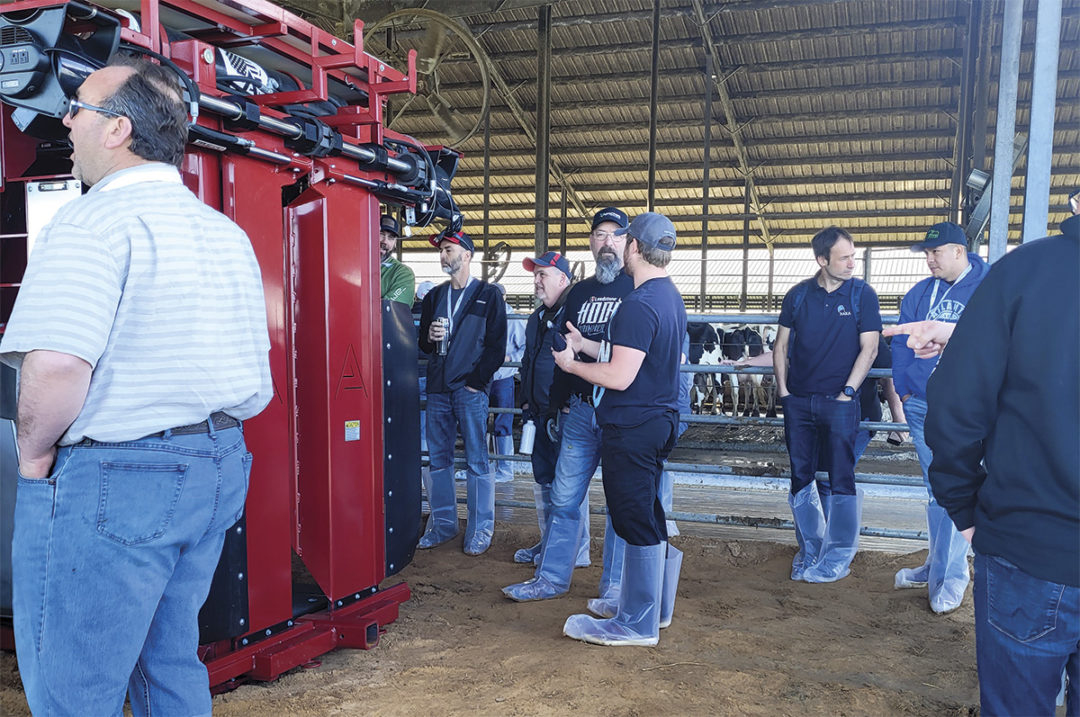The Hoof Trimmers Association (HTA) holds a Hoof Health Conference every 18 months. To ensure distinct parts of North America are represented, they hold these meetings at various locations. This year's conference was Feb. 22-24 in Orlando, Florida. The conference was two days of presentations on assorted topics relating to hoof trimming and public relations as well as meetings. There was an additional day spent on a farm where trimmers could see cows being trimmed with new equipment as well as a cadaver lab which allowed trimmers the opportunity to trim and be evaluated by others.
With the advent of the FARM Program, lameness is being evaluated on all dairies. Although there is no standardization for trimming, nor is there any licensing for trimmers, there may come a time when dairy co-ops require benchmarks for trimmers, some of which may be attending a trimming school and continuing education event. Even if there is no requirement from the FARM Program, farm managers and owners will increasingly encourage their trimmers to pursue continuing education. The HTA allows members to network with other trimmers, see the latest equipment and new products as well as learn some up-to-date research.
This year’s conference included many presentations.
Graeme Parker (known as The Hoof GP) spoke about his presence in social media. His YouTube channel has over 2 million followers, making his channel one of the most watched in all of agriculture. Social media is here to stay, and we can use it to our benefit. There are several Facebook pages dedicated to hoof trimming. We can all watch as well as post on positive hoof-trimming experiences.
Neil Barrett is a hoof trimmer from England and chair of the National Association of Cattle Foot Trimmers (their equivalent of HTA). He spoke about how their association has developed a certification for their trimmers. There are currently no government regulations, but their association has set up a criterion that certifies trimmers. It can give farmers assurance that the trimmer has completed formal training and has a level of competence. There is a lot of discussion as to whether this is an idea the HTA needs to address.
William Davy, DVM, is a vet who does hoof research at Ghent University in Belgium. He presented data from his research detailing hoof pressures and where actual weight bearing takes place. More weight bearing occurs in the claw wall and less on the sole than most people would predict.
Dan Shearer, DVM, Iowa State University, had two presentations: one on consumer trust and another on digital dermatitis (DD). His main point on trust was that we all need to put animal welfare above profit and production. On DD, he stressed the importance that regular hoof trimming and footbaths have in keeping it under control. There is enough anecdotal evidence to conclude footbaths work when keeping in mind proper placement, depth and concentration of product used. He also advocates using a wrap without cotton cloth when applying a topical treatment.
Jennifer Wilson-Wilder, Ph.D., presented her research studies and findings on DD. She and others in her team working for the U.S. Department of Agriculture in Ames, Iowa, have made strides in identifying the various treponeme bacteria associated with DD. Some of her special studies include how DD can cross into other species, specifically elk.

Cadaver feet were evaluated as part of the on-farm workshop which took place during the Hoof Trimmers Association's Hoof Health Conference Feb. 22-24 in Orlando, Florida. Photo provided by Edwin (Skip) Blake.
The trim day was held at Sutton Milk. This farm is located near Okeechobee, Florida. Trimmers could watch different trimmers trim on different equipment, a right layover squeeze chute, a left layover tilt chute and a hydraulic lift upright chute. There was also a cadaver station with four stands. Trimmers could try out their skills using one of six different trimming wheels. There were great discussions on trimming styles and techniques.

An attendee trims a cadaver foot at the on-farm workshop during the Hoof Health Conference. The on-farm workshop allowed attendees to experiment with different trimming styles and equipment. Photo provided by Edwin (Skip) Blake.











